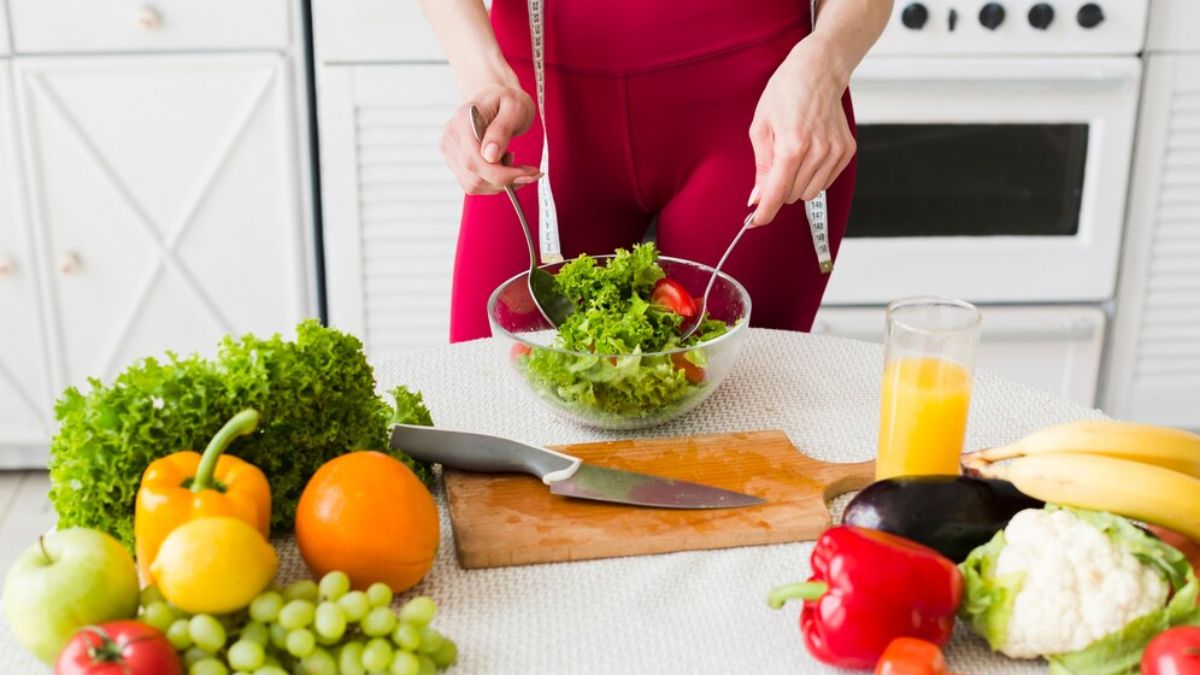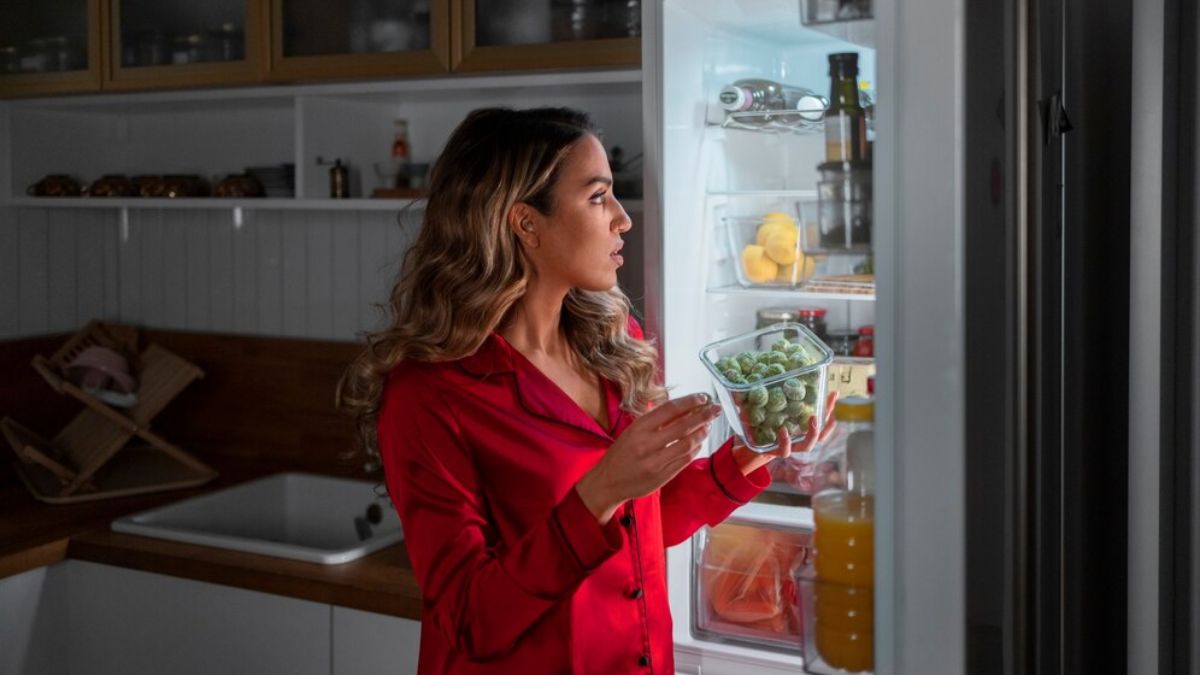
Foodborne illness is a serious concern, affecting millions worldwide every year. By following a few simple practices, you can significantly reduce your risk and ensure the food you prepare at home is safe and delicious.
Table of Content:-
Here's a breakdown of the key food safety guidelines recommended by the Food Safety and Standards Authority of India (FSSAI) to keep your kitchen a haven for safe and healthy meals.
As we celebrate the World Food Safety Day, it's important to note that #foodsafety is everyone’s business. Therefore we should;
— FSSAI (@fssaiindia) June 7, 2024
😋ensure it’s safe
🫘 grow it safe
🍲keep it safe
🥫know what’s safe
👨🍳team up for food safety#WorldFoodSafetyDay #FSSAICampaign @MoHFW_INDIA pic.twitter.com/WVozuC5Aub
Clean: Wash Your Hands and Surfaces Often
Bacteria can lurk on various surfaces in your kitchen, including your hands, cutting boards, counters, utensils, and even fresh produce. To prevent these unwelcome guests from contaminating your food, prioritise cleanliness:
- Wash your hands thoroughly: This is the golden rule of food safety. Scrub your hands with warm water and soap for at least 20 seconds before and after handling food, using the bathroom, changing diapers, or handling pets.
- Clean surfaces and utensils frequently: After preparing each food item, wash your cutting boards, dishes, utensils, and countertops with hot, soapy water. Consider using paper towels for wiping surfaces, and if you use cloth towels, wash them frequently in hot water.
- Don't forget fruits and vegetables: Rinse all fresh produce under running water, even those with skins or rinds you won't be eating. For firm-skinned fruits and vegetables, give them a good scrub with a clean vegetable brush while rinsing. Wash the lids of canned goods before opening them.

Separate: Keep Raw Meats Away from Other Foods
Cross-contamination occurs when bacteria spread from one food item to another. This is a major concern when handling raw meat, poultry, seafood, and eggs. Here's how to keep these items and their juices well away from ready-to-eat foods:
- Maintain separation throughout: Start at the grocery store. Keep raw meat, poultry, seafood, and eggs separate from other foods in your shopping cart, bags, and refrigerator.
- Dedicated cutting boards: Use one cutting board for fresh produce and a separate one for raw meat, poultry, and seafood. This helps prevent cross-contamination.
- No double duty for plates: Never place cooked food on a plate that previously held raw meat, poultry, seafood, or eggs. Wash the plate thoroughly before using it again.
- Marinades with caution: Don't reuse marinades used on raw foods unless you bring them to a boil first. This ensures any bacteria present are destroyed.
Also Read: World Food Safety Day: What Are Most Adulterated Food Items And How To Identify Them?
Cook: Ensure Proper Internal Temperatures
Food safety hinges on proper cooking temperatures. Harmful bacteria are eliminated when food reaches a high enough internal temperature. Invest in a food thermometer to ensure your cooking reaches the recommended safe minimum internal temperatures. Here are some additional tips:
- Thermometer–your cooking companion: Always check the internal temperature of cooked foods with a food thermometer in several places. This ensures all parts of the meat, poultry, seafood, eggs, or egg dishes reach safe temperatures.
- Don't rely on colour: Ground meat and poultry should be cooked until they reach a safe internal temperature, regardless of colour Colour is not a reliable indicator of doneness.
- Eggs: fully cooked, never runny: Cook eggs until both the yolk and white are firm. Avoid recipes with runny yolks or raw eggs.
- Microwaving with care: When using a microwave, cover your food, stir it regularly, and rotate the dish for even cooking. Allow food to stand after microwaving to ensure complete cooking before checking the internal temperature.
- Reheating safely: Always bring sauces, soups, and gravy to a boil when reheating.
Also Read: World Food Safety Day: How Does Overuse Of Oxytocin For Milk Production Affect Our Health?

Chill: Refrigerate Promptly to Slow Bacterial Growth
Refrigeration slows down the growth of harmful bacteria. Here's how to ensure your refrigerator keeps your food safe:
- Quick chilling is key: Refrigerate perishable foods like meat, poultry, eggs, seafood, and leftovers within 2 hours of cooking or purchasing. If the outside temperature is above 90°F, refrigerate them within 1 hour.
- Thawing safely: Never thaw food at room temperature. There are three safe methods for thawing: in the refrigerator, in cold water, and in the microwave. Food thawed in cold water or the microwave should be cooked immediately.
- Marinate in the cold: Always marinate food in the refrigerator to prevent bacterial growth.
- Cool leftovers efficiently: Divide large quantities of leftovers into shallow containers for faster cooling in the refrigerator.
- First in, first out: Regularly use or discard refrigerated foods to maintain a fresh stock and avoid spoilage.
By following these simple yet effective guidelines from the FSSAI, you can significantly reduce the risk of foodborne illness and ensure every meal you prepare at home is a celebration of safe and delicious food.
Also watch this video
How we keep this article up to date:
We work with experts and keep a close eye on the latest in health and wellness. Whenever there is a new research or helpful information, we update our articles with accurate and useful advice.
Current Version